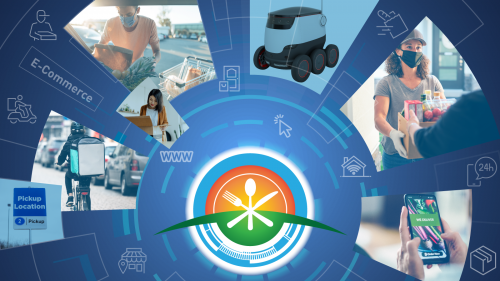FDA Works to Strengthen Food Safety Protections as Consumers Increasingly Order Foods Online

By: Frank Yiannas, Deputy Commissioner for Food Policy and Response and Andreas Keller, Director, Multi-Commodity Foods, Office of Food Safety, Center for Food Safety and Applied Nutrition
In the early days of the COVID-19 pandemic there were reports that consumers were ordering foods online in record numbers. This wasn’t surprising as restaurants closed in-store seating and communities imposed social distancing and masking requirements to help keep people safe.
However, it is now clear that this is not a trend that will be completely reversed in time but one likely to lead to a new normal in how consumers shop for food, whether it’s from restaurants, grocery stores, or companies providing meal kits and other products. Thus, the U.S. Food and Drug Administration is actively working with partners in federal, state, and local government and industry in the U.S. and other nations, as well as with consumer advocates, to help ensure that consumers aren’t ever unwittingly trading food safety for convenience.
The FDA recently held a virtual three-day summit entitled “FDA New Era of Smarter Food Safety Summit on E-Commerce: Ensuring the Safety of Foods Ordered Online and Delivered Directly to Consumers.” We are now considering all that we’ve learned, and continue to take in, in shaping a path forward.
Prior to the pandemic, online food purchases had been steadily increasing for years and the FDA outlined plans in the New Era of Smarter Food Safety blueprint that included conducting this summit to address potential vulnerabilities in the safety of these foods. By the time the blueprint was released in July 2020, the pandemic had clearly accelerated the need for this conversation. Companies monitoring e-commerce report that an estimated 91 million Americans downloaded food delivery apps in 2020.
So, we did exactly what we said we would do and invited experts from government and industry all over the world, consumer groups and academia, to share their experiences and concerns. The response showed that this is an idea whose time has come. About 4,100 people registered, and more than 12,600 have watched sessions online. There’s still an opportunity to do that as all three days have been recorded. And there’s also still time to submit comments electronically to Regulations.gov (Docket FDA-2021-N-0929) through November 20, 2021.
We heard from some of the heavy hitters in the food delivery world, including Amazon, Blue Apron, Grubhub, Instacart, Kroger and Wendy’s. Their representatives spoke of the controls and innovations they employ to keep their products safe. Some of the conversation also centered on challenges posed by the evolution of “ghost kitchens,” third-party vendors that prepare meals ordered from retail food establishments. Panelists noted that these kitchens follow different business models, with the need for safety measures varying by location, equipment, and staffing. Federal and state officials spoke of the need for food safety measures that include food handler training and consumer education. They noted the growth of online pet foods and other pet-product sales, and the regulatory challenges of protecting foods in the last mile of delivery. International regulatory partners offered their own experiences in this area and talked about the lack of consistent standards between nations.
What FDA Learned from the Summit and Next Steps on Food Safety
We’ve learned that it’s not just millennials and the tech-savvy ordering foods online but a population that crosses age and economic divides. We also heard that this issue is not unique to the U.S. In fact, China’s food delivery apps have the largest market penetration, with the U.S. being the second largest market.
The discussions gave us a lot of food for thought as we tackle key questions about appropriate time and temperature controls to help ensure food safety and safeguards against cross contamination between ready-to-eat foods and raw foods.
What more can be done to prevent food tampering? How do we ensure that foods are labeled with the information consumers need, particularly when ingredients contain allergens or gluten? And how do we empower consumers with the resources they need to recognize safety issues when the food arrives?
How do we apply the right regulatory framework to the varied landscape of e-commerce models so that we have a solid and level foundation, and food delivery is done in the safest way, every day by everyone in this line of business?
The FDA is moving forward to get those answers, transparently and in collaboration with key stakeholders in government and industry. The agency has an obligation to make sure that safety controls keep pace with innovation, a responsibility we share with the state and local regulators who oversee retail food operations.
But in a larger sense, ensuring that consumers can have confidence in the safety of their foods, whether they’re ordered in a store or on a handheld device, is a responsibility shared with everyone involved in producing, transporting, and selling foods. They will all have a seat at this table as we consider options that work across the diverse e-commerce landscape.
Next steps will include a review and analysis of the information we received at the meeting and during the public comment period. This will enable us to first identify the key issues and then determine how they should be addressed.
We welcome innovation and new food delivery systems that meet consumers’ changing needs. What we want are food safety measures that are as modern as the food delivery systems themselves.


